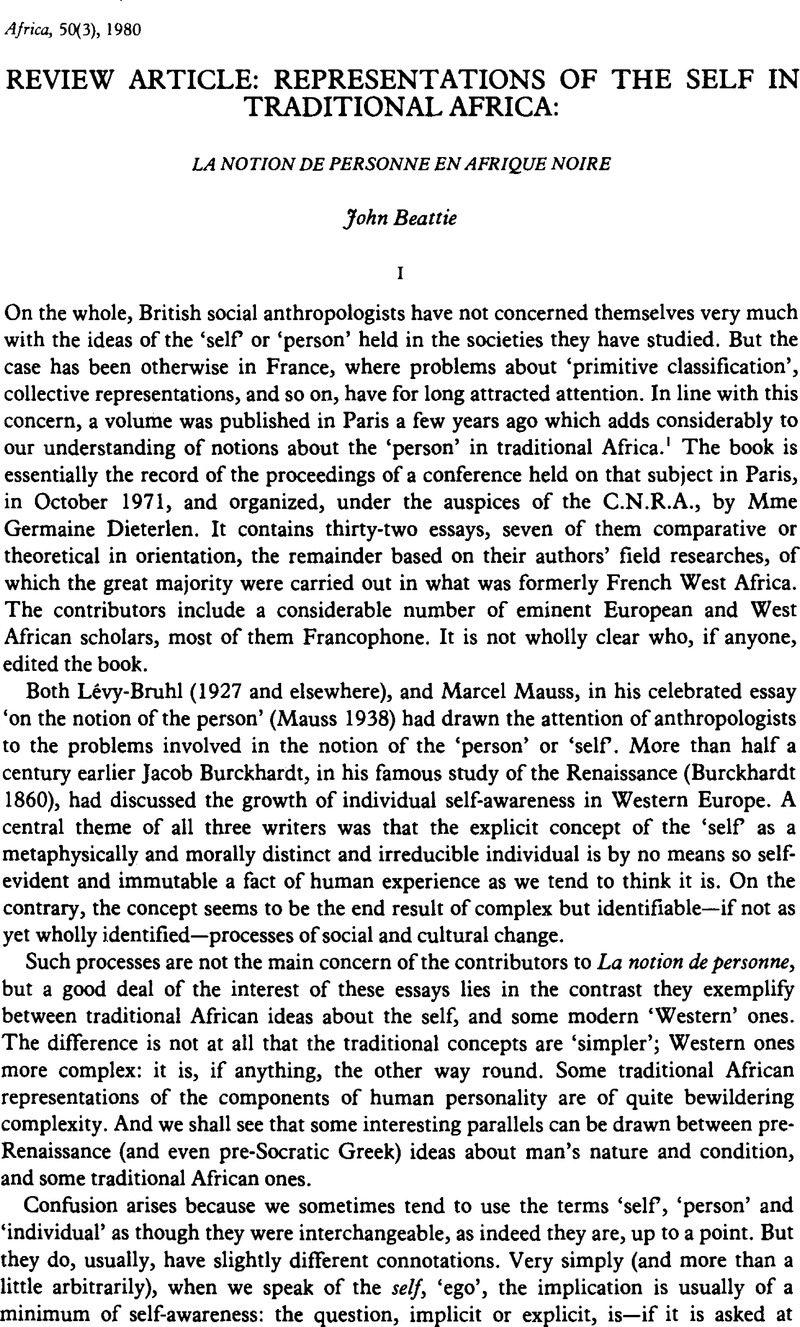Crossref Citations
This article has been cited by the following publications. This list is generated based on data provided by Crossref.
Parkin, David
1988.
The Politics of Naming among the Giriama.
The Sociological Review,
Vol. 36,
Issue. 1_suppl,
p.
61.
Nichter, Mark
1991.
Ethnomedicine: Diverse trends, common linkages. Commentary.
Medical Anthropology,
Vol. 13,
Issue. 1-2,
p.
137.
Mpofu, Elias
1994.
Exploring the Self-Concept in an African Culture.
The Journal of Genetic Psychology,
Vol. 155,
Issue. 3,
p.
341.
Meston, Cindy M.
Trapnell, Paul D.
and
Gorzalka, Boris B.
1996.
Ethnic and gender differences in sexuality: Variations in sexual behavior between Asian and non-Asian university students.
Archives of Sexual Behavior,
Vol. 25,
Issue. 1,
p.
33.
Ma, Vaunne
and
Schoeneman, Thomas J.
1997.
Individualism Versus Collectivism: A Comparison of Kenyan and American Self-Concepts.
Basic and Applied Social Psychology,
Vol. 19,
Issue. 2,
p.
261.
Åstrøm, Anne Nordrehaug
Awadia, Aminmohamed K.
and
Bjorvatn, Kjell
1998.
Perceptions of susceptibility to oral health hazards: a study of women in different cultures.
Community Dentistry and Oral Epidemiology,
Vol. 27,
Issue. 4,
p.
268.
de Kadt, Elizabeth
1998.
The concept of face and its applicability to the Zulu language.
Journal of Pragmatics,
Vol. 29,
Issue. 2,
p.
173.
Åstrøm, Anne Nordrehaug
Awadia, Aminmohamed K.
and
Bjorvatn, Kjell
1999.
Perceptions of susceptibility to oral health hazards: a study of women in different cultures.
Community Dentistry and Oral Epidemiology,
Vol. 27,
Issue. 4,
p.
268.
Yeh, Christine J.
1999.
Invisibility and Self-Construal in African American Men.
The Counseling Psychologist,
Vol. 27,
Issue. 6,
p.
810.
Yeh, Christine J.
and
Hwang, Mary Y.
2000.
Interdependence in Ethnic Identity and Self: Implications for Theory and Practice.
Journal of Counseling & Development,
Vol. 78,
Issue. 4,
p.
420.
Vignoles, Vivian L.
Chryssochoou, Xenia
and
Breakwell, Glynis M.
2000.
The Distinctiveness Principle: Identity, Meaning, and the Bounds of Cultural Relativity.
Personality and Social Psychology Review,
Vol. 4,
Issue. 4,
p.
337.
Bhawuk, Dharm P.S.
2001.
Evolution of culture assimilators:.
International Journal of Intercultural Relations,
Vol. 25,
Issue. 2,
p.
141.
Hofer, Jan
2003.
Gemeinschafts- und personzentrierte Lebensziele von männlichen Jugendlichen in Sambia:.
Zeitschrift für Entwicklungspsychologie und Pädagogische Psychologie,
Vol. 35,
Issue. 2,
p.
111.
ÅSTRØM, A. N.
and
KIWANUKA, S. N.
2006.
Examining intention to control preschool children's sugar snacking: a study of carers in Uganda.
International Journal of Paediatric Dentistry,
Vol. 16,
Issue. 1,
p.
10.
Nsamenang, A. Bame
2006.
Human ontogenesis: An indigenous African view on development and intelligence.
International Journal of Psychology,
Vol. 41,
Issue. 4,
p.
293.
Izugbara, Chimaraoke O
and
Undie, Chi-Chi
2008.
Who Owns the Body? Indigenous African Discourses of the Body and Contemporary Sexual Rights Rhetoric.
Reproductive Health Matters,
Vol. 16,
Issue. 31,
p.
159.
Dageid, Wenche
and
Duckert, Fanny
2008.
Balancing Between Normality and Social Death: Black, Rural, South African Women Coping With HIV/AIDS.
Qualitative Health Research,
Vol. 18,
Issue. 2,
p.
182.
DeBerry‐Spence, Benet
Darley, William K.
and
Blankson, Charles
2008.
African culture and business markets: implications for marketing practices.
Journal of Business & Industrial Marketing,
Vol. 23,
Issue. 6,
p.
374.
Piot, Charles
2008.
Isolément global.
p.
217.
Anchimbe, Eric A.
2011.
On not calling people by their names: Pragmatic undertones of sociocultural relationships in a postcolony.
Journal of Pragmatics,
Vol. 43,
Issue. 6,
p.
1472.



